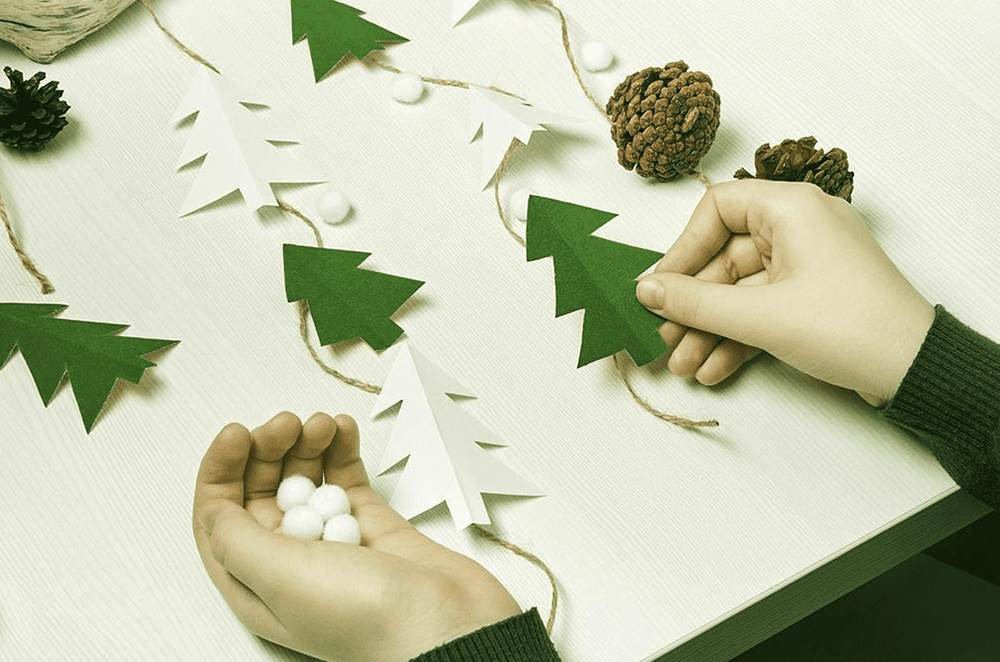
A More Sustainable Christmas is Possible: How to Limit your Carbon Footprint this Holiday Season
Fecha: 12/12/2024
With the holidays right around the corner, most of us are making lists of gift ideas for our family and friends. But we should also be thinking about the planet: overconsumption and the staggering amount of waste it produces are some of the big issues with our current, unsustainable way of life. And holiday shopping does little to help in that respect.
So if you’re looking to make the celebrations a little more sustainable this year, take a look at our ideas and tips for a ‘greener’ Christmas.
GIFTS
With all the holiday deals available, it’s hard not to get carried away when buying presents. But remember, Christmas is about family and togetherness, not about stuff.
Choose quality over quantity: Instead of buying three small, possibly disposable gifts for each family member, consider opting for one high-quality item that will last a lifetime. Shopping at secondhand or vintage stores is another great idea; it saves resources and reduces waste —an important priority, especially during a season when waste increases by up to 25%.
Choose experiences over things: Foodies might enjoy a meal at an excellent restaurant, while a spa treatment voucher could be the perfect gift for Mom. Experiences create lasting memories and help reduce your carbon footprint.
Make the planet the star: Why not gift a membership to an inspiring environmental organization? You could also consider animal adoption programs or tree-planting initiatives. These gifts allow your loved ones to watch their presents grow year after year.
What are you made of?: Ask yourself this before buying any gift. Avoid plastic items, and if a gift is made of wood, paper, or cardboard, look for an FSC certification. For clothing, choose pieces made from sustainable fibers like organic cotton or linen, or from recycled materials.
Shop locally: Supporting small businesses not only helps the local economy but also reduces packaging and emissions. Simply avoiding online shopping can significantly lower your environmental impact this December. Consider this: 3 billion trees are pulped every year to produce packaging for online sales.
Additionally, online shopping often leads to over-purchasing with plans to return items—this also takes a toll on the planet. According to the Environmental Capital Group, the shipping of returns emits about 16 million metric tons of CO2 annually, and e-commerce returns produce 14% more waste than store-bought returns.
WRAPPING AND DECORATIONS
The holidays aren’t the most eco-friendly time of year. According to the nonprofit organization Futuro Verde, the amount of waste we generate increases by up to 30% daily during the holiday season, reaching 20,000 tons of garbage per day. Wrapping paper and unsustainable decorations are a significant part of the problem. Here are some ideas to be more mindful this December:
Paper, not plastic: This should be our mantra year-round, but especially when wrapping gifts and decorating for the holidays. Make sure the paper you use is FSC-certified and avoid plasticized or glittered wrapping paper, which is often non-recyclable. Pro tip: Use twine instead of tape to wrap gifts.
The Christmas tree: While artificial trees may seem like a greener option, natural trees are actually less polluting. An artificial tree’s carbon footprint is 40 kg of CO2, compared to 3.5 to 16 kg for a natural tree, according to the British Carbon Trust.
Ideally, purchase your tree from businesses dedicated to growing, selling, and recycling Christmas trees. Even if not recycled, a natural tree will decompose eventually, while a PVC tree could take thousands of years to break down.
For a creative twist, you can make a tree from discarded corks or even egg cartons, which are also great for crafting wreaths and stars—and can be recycled afterward.
Turn off the lights: Christmas tree lights are lovely, but they also produce a lot of CO2. So do without them or turn them on sparingly, and switch to LED lights, which use as little as 1 percent of the power required by traditional Christmas lights.
Reusing is the golden rule: According to Futuro Verde, “If every family wrapped just three gifts in reused materials, it would save enough paper to cover 45,000 football fields.” Some ideas: Reuse maps, newspapers, or old magazines for wrapping, or swap paper bags for reusable fabric ones. This rule also applies to setting the table: Choose cloth napkins over paper ones, and use items you already have at home for your decorations –again, egg cartons are a fun, cheap and environmentally conscious option.
Waste or opportunity?: Many cardboard and paper gift bags are in perfect condition after sitting under the tree. There’s no reason not to reuse them next year —it's both eco-friendly and budget-friendly. If wrapping paper is too worn or torn, cut it into strips or use a shredder to create colorful filler for protecting delicate decorations or future gift shipments. If you’re crafty, use scraps for DIY projects like gift tags, ornaments, origami, or bows.
Recycle: ??Not everything that shines is recyclable. Make sure you properly separate 100% recyclable paper and carton from the rest of your packaging waste. Those shiny, glittery wrapping papers are usually not recyclable, so don’t put them in the paper recycling bin.
If you’re not sure if they are recyclable or not, try this: press the paper into a ball; if once you let go it keeps that shape, then you can safely recycle it. Otherwise, it’s better to reuse it or put it in the ordinary trash bin.
It’s also important that you remove any tape residue from the packaging, as well as bows, ribbons and the handles from gift bags if they aren’t made from paper or carton, since these can’t be recycled either.
Some gifts, like toys, come in carton boxes but also include plastic packaging and smaller bits like twisty ties made of plastic or metal. Make sure to separate them from the rest of the paper and carton waste.
By following these simple steps, you can enjoy a festive and sustainable holiday season!
